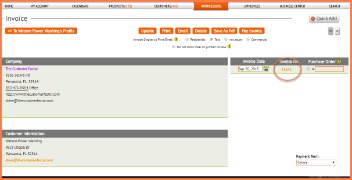Content

If the outcome is favorable , this means the company was more efficient than what it had anticipated for variable overhead. If the outcome is unfavorable , this means the company was less efficient than what it had anticipated for variable overhead. The main causes of overhead variances are described in this section. If the cost of materials increases due to market increases, it may be necessary to look at ways to streamline the production process to reduce production time. A favorable variance may occur due to economies of scale, bulk discounts for materials, cheaper supplies, efficient cost controls, or errors in budgetary planning. Give ONE argument either in favor of treating fixed manufacturing costs as product costs, or in favor of treating them as period costs.
- Discount on purchase of indirect materials and supplies because of large order sizes.
- The variable overhead flexible-budget variance is subdivided into a spending variance and an efficiency variance.
- The variable overhead category includes a number of accounts, some of which may have been incorrectly classified and so do not appear as part of variable overhead .
- The variable overhead spending concept is most applicable in situations where the production process is tightly controlled, as is the case when large numbers of identical units are produced.
- Variable Manufacturing Overhead Efficiency Variance 124 To isolate variances for the accounting period.
It is unfavorable if the actual costs are higher than the budgeted costs. The logic for direct labor variances is very similar to that of direct material. The total variance for direct labor is found by comparing actual direct labor cost to standard direct labor cost. If actual cost exceeds standard cost, the resulting variances are unfavorable and vice versa. The overall labor variance could result from any combination of having paid laborers at rates equal to, above, or below standard rates, and using more or less direct labor hours than anticipated.
Factory overhead variance analysis
Think carefully about the accounts that would be used by a manufacturer to record actual variable manufacturing overhead. Remember, the actual costs have been given to you. An adverse variable manufacturing overhead spending variance suggests that the company incurred a higher cost than the standard expense. You may be under capacity when demand drops from expected levels, or if there are problems with production.
Note that unfavorable variances offset favorable variances. A total variance could be zero, resulting from favorable pricing that was wiped out by waste. A good manager would want to take corrective action, but would be unaware of the problem based on an overall budget versus actual comparison. Note that both approaches—the direct materials price variance calculation and the alternative calculation—yield the same result.
Reducing Variable Manufacturing Overhead
Our work has been directly cited by organizations including Entrepreneur, Business Insider, Investopedia, Forbes, CNBC, and many others. Finance Strategists is a leading financial literacy non-profit organization priding itself on providing accurate and reliable financial information to millions of readers each year. This team of experts helps Finance Strategists maintain the highest level of accuracy and professionalism possible. At Finance Strategists, we partner with financial experts to ensure the accuracy of our financial content.

This could occur because of improved morale in the company, which could result from an increase in wages or an improvement in the compensation scheme. Thus an alternative approach to this calculation can be used assuming the standard fixed overhead cost per unit. Note that both approaches—direct labor rate variance calculation and the alternative Variable Manufacturing Overhead Variance Analysis calculation—yield the same result. Note that both approaches—the direct materials quantity variance calculation and the alternative calculation—yield the same result. The amount of expense related to fixed overhead should be relatively fixed, and so the fixed overhead spending variance should not theoretically vary much from the budget.
VFOH Spending Variance and VFOH Efficiency Variance
Prepare an analysis of all variable manufacturing overhead and fixed manufacturing overhead variances, using the 4-variance analysis in Figure 13 (p. 585). Describe how individual fixed manufacturing https://quick-bookkeeping.net/ overhead items are controlled from day to day. Discuss possible causes of the fixed manufacturing overhead variances. Recall that there were 50 actual direct labor hours in January.
- Another example is the cost of the manufacturing supplies that increase when production increases.
- The fixed overhead spending variance is caused by the actual realization of fixed costs differing from the budgeted amounts.
- Direct materials price variance – Also called the direct material spending or direct material rate variance.
- As a result, variance analysis for overhead is split between variances related to variable overhead and variances related to fixed overhead.
- The budgeted number of suits to be manufactured in June 2019 is 1040.
